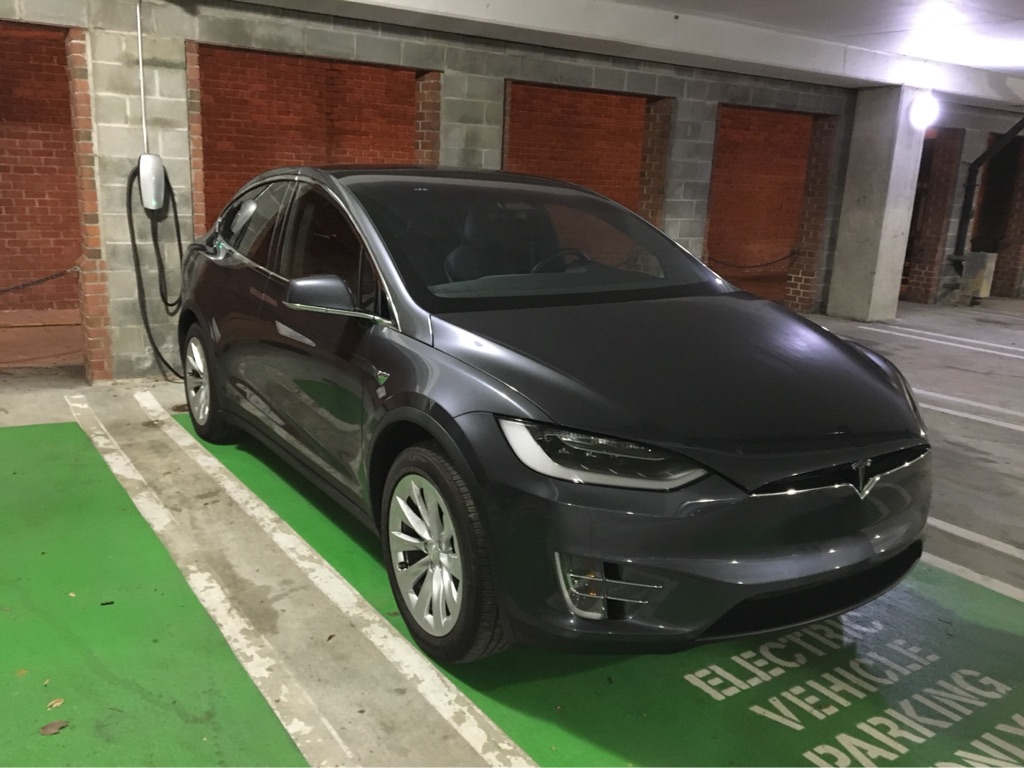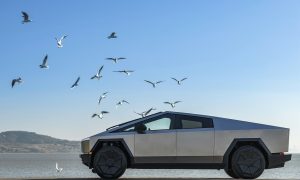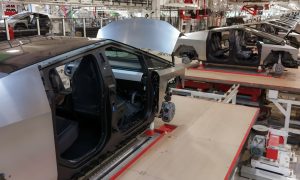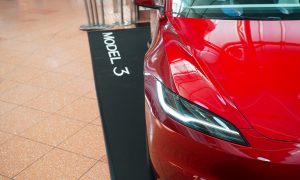As electric vehicles (EVs) become increasingly common on roads around the world, many infrastructural changes will be needed to accommodate them. One example includes the design of parking garages, which some say will require updated fire safety protocols and additional modifications to accommodate the heavy weight of EVs.
The United Kingdom’s Institution of Structural Engineers released a new design guidance for parking garages earlier this year, pointing out a broad range of topics related to the structures, from EV weight, charging access and reduced noise levels to fire safety considerations (via CNBC). The guidance includes suggestions for the design of garages that are multi-story, underground or simply located inside offices or residential buildings.
Perhaps the most pressing topic included in the guidance for parking garages — called multi-story car parks in the U.K. — is the battery hardware used in EVs, which makes them much heavier than internal combustion engine (ICE) vehicles. With increased range models and a wider span of vehicle classes, EV weights will likely continue getting heavier in the future.
“This extra load and the changing fire safety requirements are all considerations not just for new car parks, but for existing structures too,” the institution writes in the report.
According to the group, average vehicle weights have increased from 1.5 metric tons (3,307 pounds) in 1974 to almost 2 metric tons (4,409 pounds) this year. As one example, Tesla’s forthcoming Cybertruck is a stainless steel behemoth, expected to weigh somewhere between 5,000 and 8,000 pounds (2.3 to 3.6 metric tons).
Institution fellow and co-author of the guidance Chris Whapples also notes that some newer EVs are well over 3 metric tons (6,614 pounds).
“The thing to bear in mind is that the ones that cause the damage, if you like, are the heavy vehicles — not the vehicles that are heavier than they were 40 years ago but still within the capacity of the design for car parks,” Whapples explained in an interview with CNBC. “We’re seeing increasing numbers now of SUVs, large executive cars — both fossil-fueled and battery ones — and pickup trucks, which are immensely heavy.”
Whapples details a handful of potential solutions for heavy vehicles, primarily including the need to retrofit older garages with increased structural support, either in specific spots that are determined to be weaker or in their entirety. He also notes that heavy vehicles could stay on ground floors to park, and garages could even screen the weights of cars as they enter.
“If one pickup is significantly overloaded and that car park is weak, that’s a potential disaster waiting to happen,” Whapples added. “We said, as an industry, we must actually check our car parks out and make sure that that’s not going to happen. Because what we want is the public to maintain confidence in our car parks and structural engineers.”
Another top concern detailed in the guidance was improving fire safety protocols in parking garages. Whapples notes that fire risks aren’t exclusive to EVs, adding that gasoline cars can also start fires and make situations more complicated. While EV fires aren’t considered more common than ICE vehicle fires, they can be especially tough to put out, he explains.
“To actually extinguish an EV fire is very, very difficult — particularly if the battery is on fire, because you’ve got so much energy that’s locked in,” Whapples said.
As for potential solutions, Whapples says that sprinkler systems could be an important way to mitigate fire spread, especially in underground car parks.
“Although the sprinkler system will not put out the car fire, it will reduce the rate of spread within the car park, so it’s constantly … ‘quenching’ the car next to the one that’s on fire, and stopping that one from catching fire,” Whapples explains.
All of these and more points will need to be considered ahead of mass EV adoption, both for existing garages and newly built construction. The International Energy Agency (IEA) expects EVs, buses, vans and heavy trucks to reach as many as 145 million units globally by 2030, though government ramp-up efforts could boost that number even more. In 2022, 10 million EVs were sold, including plug-in hybrids and battery-electric vehicles.
The discussions come ahead of Tesla’s initial release of the Cybertruck, which has been widely discussed for its large size, among other details. If many EVs are physically larger than ICE vehicles in the future, it could also require garages to be built with similarly larger parking spaces. Tesla has rolled out some wider and longer parking spaces at its Supercharger stations for the Cybertruck, a move that may be necessary for all parking structures down the road.
What are your thoughts? Let me know at zach@teslarati.com, find me on X at @zacharyvisconti, or send your tips to us at tips@teslarati.com.











